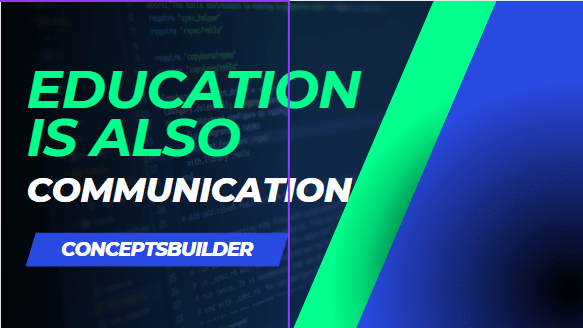Discover how education is a conscious process of communication, delving into its significance, elements, and impact on effective learning. Explore the comprehensive article to gain insights into this intriguing educational concept.
Education, a cornerstone of human development, and communication, the bedrock of interaction, intertwine in a fascinating dance of knowledge sharing. In this comprehensive article, we’ll explore how education is a conscious process of communication that underpins effective learning. From understanding the core elements of this relationship to unraveling its significance, we’ll journey through the symbiotic world of education and communication.
Table of Contents
How Education Is Conscious Process of Communication?
At the heart of the educational journey lies the concept that education is a conscious process of communication. This means that learning is not a passive absorption of information but an active exchange between educators, learners, and their environment. In this process, knowledge is transmitted, received, and internalized through a range of communication channels.
The Significance of Conscious Communication in Education
Conscious communication within education goes beyond mere information delivery; it fosters understanding, engagement, and critical thinking. When educators employ effective communication strategies, learners are empowered to grasp complex concepts, question assumptions, and apply their knowledge in real-world scenarios.
Elements of Education as a Conscious Communication Process
Education as a conscious process of communication comprises several key elements that synergistically contribute to successful learning outcomes:
1. Verbal Interaction: The spoken word serves as a primary channel for knowledge transfer, enabling educators to convey ideas with nuance and learners to seek clarifications.
2. Non-Verbal Cues: Body language, gestures, and facial expressions are potent tools that enhance communication’s depth, making it more relatable and memorable.
3. Visual Aids: Utilizing visuals such as diagrams, charts, and presentations amplifies the impact of educational content, catering to different learning styles.
4. Active Listening: Encouraging active listening cultivates a receptive learning environment, where learners feel valued and acknowledged.
5. Questioning and Feedback: Thoughtful questions and constructive feedback stimulate critical thinking, nurturing a culture of curiosity and growth.
Exploring the Impact: How Education and Communication Interact
The intricate interplay between education and communication significantly influences learning outcomes:
Enhancing Engagement Through Dialogue
When educators facilitate open discussions, learners can articulate their viewpoints, collaborate with peers, and develop a deeper understanding of the subject matter.
Also Read:
Earning
University students
Sweatcoin
Learn
Earning
Students
college students
Money
Uni students
Earning
University students
Sweatcoin
Learn
Earning
Students
college students
Money
Uni students
Earning
University students
Sweatcoin
Learn
Earning
Students
college students
Money
Uni students
Earning
University students
Sweatcoin
Learn
Earning
Students
college students
Money
Uni students
Earning
University students
Sweatcoin
Learn
Earning
Students
college students
Money
Uni students
Earning
University students
Sweatcoin
Learn
Earning
Fostering a Supportive Learning Environment
Effective communication builds trust and rapport between educators and learners, fostering an environment where students feel safe to express their thoughts and ask questions.
Tailoring Teaching Approaches
By gauging learner responses, educators can adapt their teaching methods to suit individual needs, ensuring a comprehensive grasp of the material.
Leveraging Technology: Digital Communication in Education
In today’s digital age, technology has revolutionized education’s communication landscape:
Virtual Classrooms
Online learning platforms enable educators to engage with students globally, transcending geographical barriers.
Multimedia Integration
Digital tools allow educators to incorporate multimedia elements, catering to diverse learning preferences and enhancing retention.
Addressing Challenges: Overcoming Barriers to Effective Communication in Education
Despite its benefits, conscious communication in education faces challenges:
Language and Cultural Differences
In diverse classrooms, educators must navigate language barriers and cultural nuances to ensure equitable comprehension.
Technology Integration
While technology enhances communication, it also demands digital literacy and access, posing obstacles for some learners.
Conclusion
In the tapestry of education, conscious communication weaves threads of understanding, connection, and empowerment. By recognizing education as a conscious process of communication, we embrace the responsibility to foster engaging learning environments that equip learners with not just knowledge, but also the skills to thrive in an ever-evolving world.
